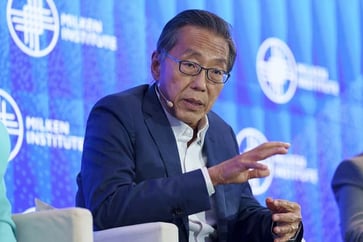Applying for aid for the 2025-26 academic year is now possible ahead of schedule.

Prior to the official Dec. 1 launch date, the Department of Education made it public that all students and families can already obtain the 2025-26 Free Application for Federal Student Aid.
The department postponed the official launch of the 2025-26 application by two months, from the standard Oct. 1 opening day to Dec. 1, following a challenging introduction of the updated form last year.
The department invited select students and families to participate in a beta testing period for the 2025-26 FAFSA starting on Oct. 1. Over the past few weeks, the department closely monitored the online application and test groups' feedback for bugs and issues that could be addressed before the full launch.
The 2025-26 FAFA application is now accessible and submittable for all students and families as of Nov. 18. Although the application is still in beta testing, those who submit a form during this time will not need to submit another application after Dec. 1.
"The department will process FAFSA forms during beta periods and send them to institutions of higher education and states. Students who submit a FAFSA form during any beta period will be able to make any necessary corrections and will not need to submit a subsequent 2025–26 FAFSA form."
The beta testing period will end no later than Dec. 1, according to the department. To complete your FAFSA, visit studentaid.gov. You'll need your Federal Student Aid ID or, if you don't have an account, your Social Security number to create one.
On track for a better year
First-year enrollment at colleges across the country decreased by approximately 5% during the 2024-25 academic year, according to data from the National Student Clearing House Research Center.
The messy FAFSA rollout last year was a significant contributing factor to the declines in first-year enrollment at four-year colleges that serve low-income students, according to the National Student Clearing House.
The National Association of Student Financial Aid Administrators' interim president and CEO, Beth Maglione, stated that the Department of Education's decision to move forward with opening this year's FAFSA ahead of schedule, but not on a rushed timeline, suggests that this year will be smoother.
The Department's process and planned rollout of the 2025-26 FAFSA suggests that federal leaders have learned from last year's glitchy rollout and have used those lessons to create a more stable roadmap.
Since October 1st, over 14,000 students have submitted a FAFSA, and those who participated in the beta testing period reported a 95% satisfaction rate.
It is advisable to submit a FAFSA as early as possible if you plan to attend college in the 2025-26 academic year. This form is necessary to be eligible for any federal or state financial aid, and many colleges consider it when determining institutional aid.
Eligibility for financial aid through the FAFSA is not limited by income, and financial aid administrators take into account household income, family size, and other factors when determining aid eligibility. The federal FAFSA deadline is June 2026, but many schools and states have earlier deadlines for students attending in the fall of 2025.
Earn more money at work by taking CNBC's online course on negotiating a higher salary. Expert instructors will teach you the necessary skills to increase your paycheck, including how to prepare, build confidence, communicate effectively, and craft a counteroffer. Start now and use the coupon code EARLYBIRD for a 50% discount through November 26, 2024.
Sign up for CNBC Make It's newsletter to receive expert advice on work, money, and life.

Make It
You might also like
- One of the most Googled houses in the world, the Chicago-area house from 'Home Alone,' has just sold for $5.5 million.
- A psychologist claims that TikTok is causing harm to children on an industrial scale.
- I won't be consuming these 6 foods that can accelerate the aging process and shorten my lifespan, as advised by a plastic surgeon with 20 years of experience.
- In order to succeed in 2025, the best advice from a career coach is to be proactive.
- Fourteen colleges provide bachelor's degrees in AI, with only one Ivy League institution among them.



















